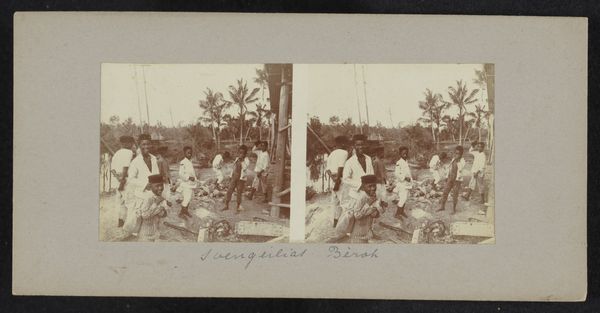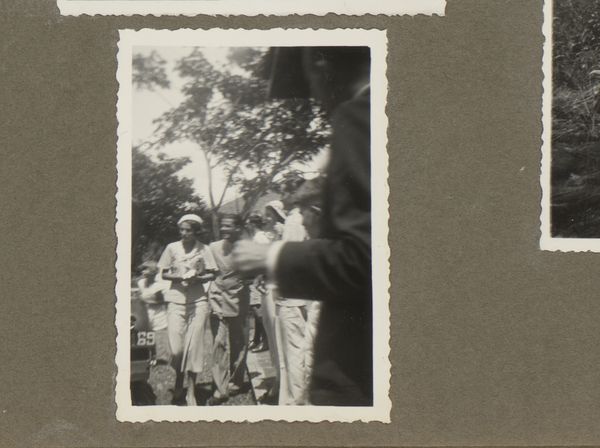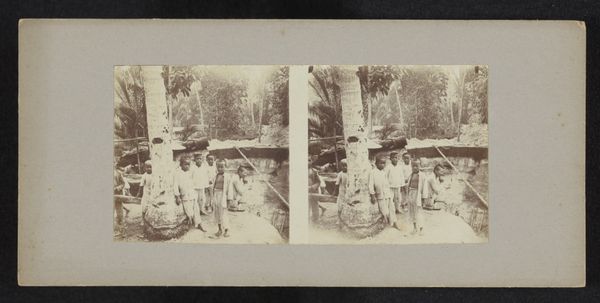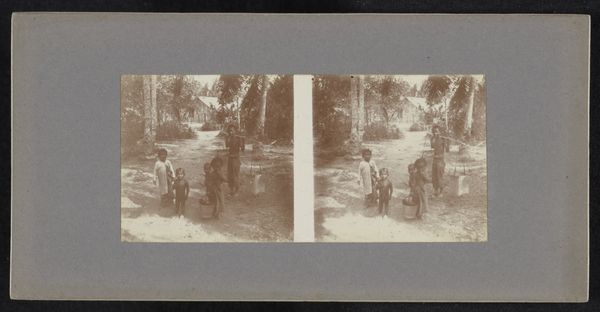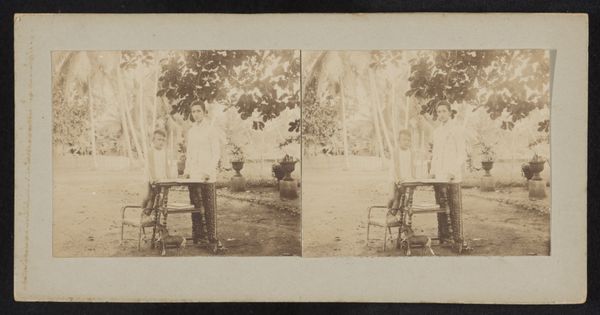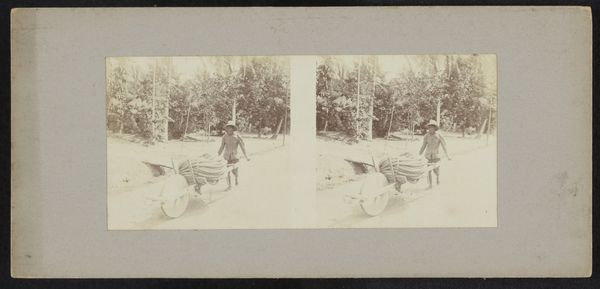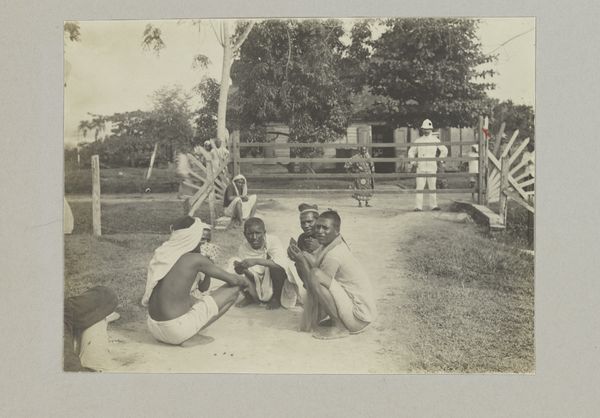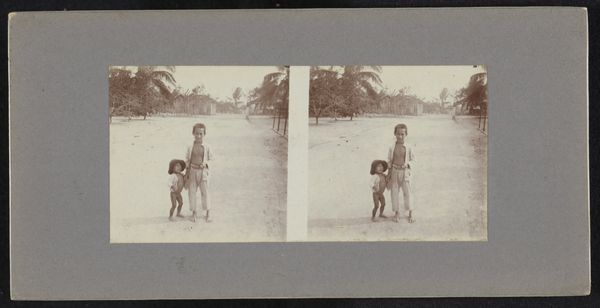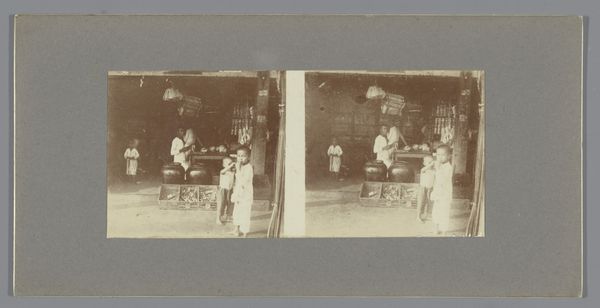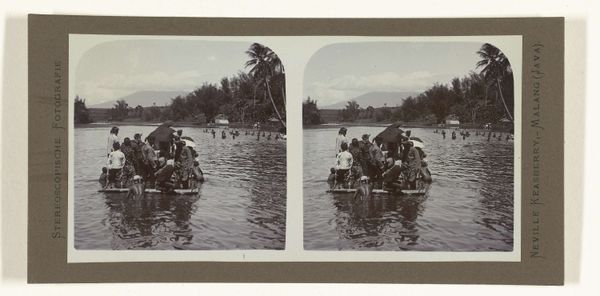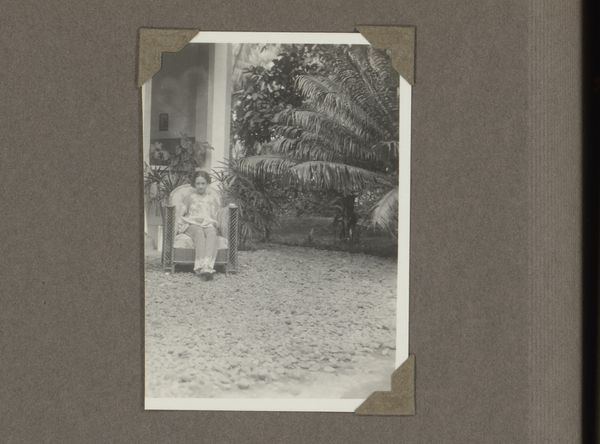
photography, albumen-print
#
landscape
#
photography
#
orientalism
#
genre-painting
#
albumen-print
Dimensions: height 55 mm, width 57 mm, height 88 mm, width 178 mm
Copyright: Rijks Museum: Open Domain
Editor: So, this is “Tinmijn” by Robert Julius Boers, dated sometime between 1900 and 1922. It’s an albumen print, so a photographic work. Looking at the composition, I notice how the figures and the machinery create a stark, almost geometric pattern against the softer background of trees and what looks like a hillside. What jumps out to you about this piece? Curator: The orthogonal structure of the timber framing and the repetitive verticality of the mining equipment create a powerful visual rhythm. Note also the subtle gradations of tone in the albumen print itself – how the artist exploits the light to define form and space within a seemingly straightforward documentary image. Do you perceive a tension in the relationship between the figures and the geometry surrounding them? Editor: I do see that tension. It's almost as if they are part of the machine itself, the way they are positioned. But how does the use of photography as a medium inform your reading of the image? Curator: Precisely. The photographic medium, in this instance, is utilized as a tool for objective observation but its composition and tonal qualities serve an aesthetic purpose, emphasizing structure and pattern over mere representation. The formal relationships established within the frame take precedence. It's not just about recording the tin mine, but about organizing shapes and values to create an aesthetically compelling image. Editor: That's a different way of looking at it. I tend to focus on what's being represented. Curator: The subject matter, while interesting, can sometimes obscure deeper appreciation for formal artistry and how its qualities shape the artwork's meaning. Editor: This discussion is enlightening. I'm more aware of how formal analysis allows for deeper understanding beyond the immediate subject matter. Curator: Indeed. Attending to visual form unlocks interpretive potential of the artistic composition and informs how to decode the visual patterns to arrive at an original interpretation.
Comments
No comments
Be the first to comment and join the conversation on the ultimate creative platform.
